Thinking about exploring Colombia’s coffee region, but aren’t sure where to start or what to do? I have made this guide for you to hopefully answer ALL of your questions about this magical place.
Out of the two months I spent traveling alone in Colombia, my favorite area by far was the famous coffee region.
You don’t even have to be a crazy coffee fanatic to enjoy this paradise that is deemed a UNESCO world heritage site, currently comprising six states and still expanding.
Colombia’s coffee zone is filled with rainbow-colored villages, epic views of mountain landscapes, hikes to stunning waterfalls, national parks, plenty of exotic birds and wildlife, and so much more… in addition to the opportunity to visit coffee farms that will serve you the perfectly infused blend of a warm cup of rich, freshly-brewed caffeinated pleasure.
Morning cup overlooking the epic mountains of Manizales
First of all, Colombia’s coffee region has several names, including coffee triangle, coffee axis, coffee belt, zona cafetera, eje cafetero, or coffee country… and I’m sure there are probably more.
Though it will require some bus rides, I guarantee it will surely be a highlight of your Colombian trip - if not the absolute best part.
Besides, traveling by land was fun and very easy! Not only is it cheap, but it allows you to experience an authentic taste of the cultural landscape: meeting the real campesinos (country folk) of Colombia, taking a break from busy city life, and enjoying the peaceful nature that is still untouched.
These small colonial towns have not received tourists quite as long as other parts of the world, due to old perspectives on Colombia’s history. This gives you - a respectful traveler - a chance to visit this beautiful gem of a country whose people have fought towards an incredible transformation over the last couple decades.
If you adore animals, you will fall in love with Colombia’s Zona Cafetera.
You may be wondering if it is safe to venture into the rural regions of Colombia, and I will cover all of the details in the section on safety. (Spoiler alert: as a solo female traveler in Colombia, I actually felt the safest when I was in the coffee region, especially compared with larger cities such as Medellin or Cartagena.)
I’ve traveled 6 continents, so I mean it when I say that this specific route was a life-changing experience for me. And I swear it’s not just the caffeine talking!
Besides the list of top sights for the spirit, this article will detail everything you need to know, such as how to get around the coffee region, what to do, where to stay, tips for staying safe, and more that I wish I had - in order to help other backpackers (including solo female travelers like myself) to feel comfortable exploring Colombia’s coffee region and to have the smoothest itinerary possible.
Best Places to Visit in the Coffee Region of Colombia
The beautiful thing about the zona cafetera is that it is filled with so many hidden gems throughout the region, that it is nearly impossible to visit every coffee town if you only have a short period of time.
Thus, I’ve listed the best places to visit when backpacking here for the first time, as well as the less-trekked spots for adventurous travelers.
Jardin, Antioquia
Jardin, Antioquia was my absolute favorite colonial town that I visited in Colombia, and not one to be missed.
While Jardin is actually located north of what some call the “official” coffee region, I’ve included it in this list as it is along the way from Medellin and a real jewel.
Colorful streets of Jardin, on the edge of Colombia’s coffee region
Jardin is a quaint village of colorful buildings situated among breathtaking green hillsides, heavenly waterfalls, natural caves and wondrous trails, complete with a lively plaza in the center.
There’s even an ecological nature reserve where you will see the famous South American red bird, the Andean cock-of-the-rock.
Seeing the famous Gallito de las Rocas was one of the most memorable things I did in Colombia’s coffee triangle.
The weekends in Jardin fill up with folks visiting from Medellin, but even the weeknight evenings emit good vibes, with horses parading through the cobbled streets.
I spent 4 nights in Jardin, but you could easily spend several more if you enjoy hiking, nature, or just taking pictures of the town’s colors at sunset.
There are plenty of things to do in this coffee town that is frequently overlooked on the backpacker route, so I even wrote a separate article with more details on what to do in Jardin.
Salento, Quindio and the Cocora Valley
Salento, Quindio is probably the most well-known town you have heard of in the coffee region of Colombia. It remains quite popular with backpackers, giving it a slightly touristy feel in peak season - but there are good reasons why it is a hot spot on the coffee trail!
A 20 minute jeep ride from Salento’s main square lies the Cocora Valley (Valle del Cocora), known for its sky-scraping wax palm trees.
Quindio’s towering wax palm trees loom over Cocora Valley in Colombia’s coffee region.
In this fairy tale valley, you can take a thrilling (and muddy) mountain bike tour, go horseback riding to see more of the landscape, or simply hike it on your own.
Check out my Cocora Valley article for more information on the famous site, including visiting the hidden hummingbird house and the best way to hike the loop.
In Salento, you can also do a self-guided tour through the hills on foot and stop at several coffee farms to learn about the coffee production process.
Besides hiking and drinking beloved bean juice, Salento is a fantastic place to easily meet other backpackers, with the most options in the region for various types of hostels and accommodations.
Four backpackers and four locals (and all of us loco!). It was easy to meet other solo travelers throughout the different towns in Colombia’s coffee region, and felt very welcoming.
There is a row of bars to dance at night, as well as trendy restaurants to eat the food you miss back home (but not too trendy… I just wanted some hummus, ok?).
Cute shops with handmade goods border the main square, and while I’m not usually one to buy souvenirs that I have to lug around for months while backpacking, my fellow travelers and I found truly useful items for the cold weather region (a fuzzy coat for those cold nights, stylish pants for the real campesino look, or a good sun hat).
For more ideas about Salento, Colombia and all the info you need, check out my in-depth article.
Manizales, Pereira, Armenia
Manizales, Pereira, and Armenia differ greatly from the local towns of Jardin and Salento in that they are big industrial cities, not filled with many backpackers.
However, these cities are still fantastic launching pads to nature-filled activities, particularly the enormous Los Nevados National Park, where you can take a tour among snowy mountains, lakes and volcanoes. This can be a day trip, or even a hike for several days if you prefer.
Choosing to stop over in Manizales for a few days was the best decision I made, especially to avoid traveling for 10+ hours in a day.
I stayed at a unique hostel in the hills just outside of town that had a bird sanctuary, yoga room, and magnificent views of Colombia.
Chilling out in Manizales for a few days was tranquil, away from the typical backpacker route.
While other travelers I met groaned about the long rides and multiple buses just to get to Salento, I was thriving in Manizales with other travelers, bathing in hot springs, hiking to a creek with local folks, or doing sunrise yoga sessions at what seemed like the top of the world.
From Manizales, Armenia, or Pereira (deemed the capital of the coffee cultural landscape by UNESCO), you can get a feel for a more authentic picture of Colombia than only the touristy areas packed with gringos, because that’s why you came here, right?
However, these cities are still flourishing with backpackers’ favorite things to do in the region, such as take coffee farm tours, have a drink in the local plazas, trek to lakes and mountains, and meet other solo travelers at the hostels.
Santa Rosa de Cabal
Located between Manizales and Pereira, Santa Rosa de Cabal is famous with Colombians for its waterfall draping thermal hot springs, but lesser known by international travelers.
Photo courtesy of Tripadvisor of Santa Helena waterfalls, above the hot springs.
My favorite way to learn about new places is through word of mouth, by speaking with both local people and other backpackers.
I kept hearing about the ridiculous beauty of Santa Rosa, but unfortunately I learned about this stunning location too late as I was already on my way to Pereira.
If you have time on your itinerary, consider a stop to Santa Rosa de Cabal for a dip under the cascade, and try to avoid weekends and evenings for the least amount of people.
Filandia, Buenavista, Pijao… and more!
As mentioned before, Colombia’s coffee region is chock full of small towns with loads of personality, and these same memorable places to visit kept being mentioned by other travelers and locals again and again.
Colombia’s coffee region is full of personable towns, if you have time to take it slowwww…
While I was not able to visit all of these local pueblos, as they are just a bit harder to get to than the main hotspots (plus, I like to take my time and move slow), it doesn’t mean you can’t carve your own route, my Wolfettes!
Filandia is a laid back town about 45 minutes from Salento, with less crowds and tourists. From the center, you can take a hike to a double waterfall, dine in cute cafes, and bike or hop on a jeep through the unforgettable Colombian nature I keep discussing (soon, you’ll know exactly what I mean).
Buenavista and Pijao are farther south, about 1.5 hours from Salento but convenient if you are making your way down towards Cali. What is there to do in Buenavista or Pijao? You guessed it - more exotic flora and fauna, friendly local folks, forest views, intimate streets and opportunities to try the “best” coffee in the world.
I might sound like a broken record, but if you have the time, don’t be afraid to venture off the beaten path. Remember, authentic traveling isn’t about checking items off a list, or seeing every single place. It’s about welcoming the unexpected, trying new things, immersing yourself in a new neighborhood, getting lost and laughing about it along the way.
Best Things to Do in Colombia’s Coffee Region
Drink a cup of infused coffee at a finca (coffee farm)
Whether you decide to take a tour or not, you can still sample lots of freshly brewed concoctions at family-run cafes throughout the entire region, many of which use blends of different coffee beans in each cup.
Yes, you can actually taste the difference in coffee beans when they are picked, blended, and infused with love.
Visiting a family-run coffee farm in Salento, they also produce their own milk.
Hike to waterfalls, valleys and mountains
As you can tell so far, the coffee axis boasts loads of trails, and some are only discoverable once you arrive. In other words, not all are on the internet; you may have to ask your hostel hosts or workers in local shops.
Point being, there is no shortage of waterfalls in this country where it rains frequently, mountains in the rolling landscape, or precious green valleys.
Met other solo travelers in the hostel and we rode horses to El Chorro Blanco - one of my most memorable days in Colombia’s coffee region!
Go horseback riding, ride bikes, or rent ATVs
If you’re not keen on taking hours out of your travel itinerary to trek through the Colombian jungle, you can also bike, ride horses, or rent ATVs (all-terrain vehicles) in most cities within the coffee region.
Some hostels offer tours at a lower cost than online and you are supporting local business. However, feel free to book ahead if you want more selection, peace of mind, and a guarantee that your tour will be offered in English.
Take pictures of colorful pueblos
If you’re like me, my favorite activity to pass the time as a solo traveler is merely strolling through the streets of villages around the world and taking pictures of everyday life.
Thankfully, Colombian pueblos (towns) are usually painted with bright, vibrant buildings out of a storybook. It seems like the most afternoon activity of the local people is sitting out on the balcony or patio around sunset, while people watching and mingling with fellow neighbors. Even the dogs do it…
Everyone “people watches” out on their balcony in Colombia, even the dogs…
Bathe in hot springs (termales)
Cities towards the southern side of the coffee triangle tend to be a bit chilly, so soaking in the natural hot springs of the region relaxed our bodies, especially after all the adventurous hiking and traveling. Plus, the tree-topped views are incredible… as always in Colombia.
Witness bird watching at nature reserves (and pretty much everywhere!)
Did you know Colombia has more species of birds than any other country in the world? It’s a birdwatcher’s paradise, and while I am not a connoisseur, I have never seen so many vibrant birds in my life.
You can spot them among the trails in everyday life, or visit ecological reserves in towns like Jardin and Manizales.
Visit Los Nevados National Park
From Manizales, Armenia, or Pereira, a tour guide is required to visit Los Nevados National Park. The all-day visits often include trips to the active volcano Nevado del Ruiz, the green Lake Verde and trout-rich Lake Otun, as well as a stop at thermal baths and snow-capped mountains.
My hostel-mates and I decided to skip the national park due to low visibility in rainy March – lots of fog, cold weather, and it is on the pricier side. Instead, we listened to our energy levels as we had already been hiking a lot - but plenty of other travelers we spoke to truly enjoyed their visit to this national park, and if the weather permits, the colors look absolutely beautiful.
If you go, make sure to have the right gear for the terrain and climate, which I’ve listed at the bottom of this article and in my Colombia Packing List.
Experience incredible views of Colombia like none other
Ride cable cars to the top of mountainous plains, trek steep climbs, or stay in hostels perched above the cities for the best views of this diverse region. Colombia’s vistas are the essence of tranquility…
A village view of Jardin from the top of the cable car.
Eat different types of food
During your trip, you will be eating plates upon plates of local Colombian food… and that’s certainly the goal, to experience the cultural landscape. But sometimes, you might miss that Western food, and there’s nothing wrong with that.
In places like Salento or Jardin, you’ll have the chance to eat some real Italian style pizza, munch on sushi, indulge in Mediterranean flavors and find more vegan / vegetarian food.
Stay in unique accommodations throughout the region
Colombian family-run hostels offer personable hospitality in the coffee axis, with fewer guests visiting the small towns compared with the larger cities of the country.
Many coffee plantations offer bed and breakfast options along with their tours, or you can choose hostels that include extras like nature hikes, cooking tutorials, yoga or salsa classes.
There are always the hostels that “all the travelers” talk about… but taking a risk on a quieter option is more of my style, to really connect with the spirit of a place.
Nevertheless, Hostelworld is always a good source to book and read reviews before you arrive.
Beautiful bird sanctuary in a unique hostel in Manizales. It was always cute saying hi to them in the mornings.
10 Day Itinerary in Colombia Coffee Region
Day 1: Medellin to Jardin
Morning: Take the bus from Medellin to Jardin.
Afternoon / Evening: Take pictures in the colorful streets of Jardin and have a coffee or bite in the main plaza. If you have time, take the cable car “La Garrucha” up to the top of the mountain, with the option to hike or ride back.
Day 2: Jardin
All Day: Hike to La Cueva Esplendor, a waterfall within a cave (easy-moderate)
OR
Take on the Four Waterfalls Hike (strenuous).
La Cueva Esplendor is a popular waterfall within a cave in Jardin, Colombia
Day 3: Jardin
Morning / All Day: Horseback riding tour to Chorro Blanco waterfall
OR
Hike above Jardin to the Jesus statue (El Cristo Rey) and eat at Cafe Jardin for gorgeous views while they explain the coffee production process and infuse a cup in front of you.
Afternoon: Visit the natural bird reserve, Parque Natural Jardin de Rocas, to see the famous Gallito de Roca. It’s only open from 3PM to 5:30PM each day and you can walk from town, but you won’t need more than 45 minutes for this small but delightful sanctuary.
Day 4: Jardin to Manizales
Morning: Travel by bus and arrive in Manizales in the afternoon.
Afternoon / Evening: Visit the bullring Plaza de Toros, climb to the top of the the gothic church, and / or ride the cable car for sunset views.
Day 5: Manizales
Morning: Tour a coffee farm such as Hacienda Venecia, who will arrange your transportation to and from town.
Afternoon / Evening: Relax in your choice of hot springs. I recommend Ecotermales El Otono, with 3 different temperature pools to choose from, and there is a bus from the main square that goes directly there.
Day 6: Los Nevados National Park
All day: Take a tour to Los Nevados National Park, if you have the means to spend
OR
Spend another day in Salento, Jardin, or another city (we just decided to rest in Manizales instead)!
This was the day I hiked 26 km / 16 mi… that’s why you always bring extra snacks and water, folks.
Day 7: Manizales - Salento
Morning: Take the bus to Pereira and then another bus to Salento.
Afternoon / Evening: Explore Salento’s square and hilly streets. Walk to the top of the colorful stairs at the end of Calle Real for a view at sunset.
Day 8: Salento
Morning / All Day: Take an easy hike (or rent an ATV) through the forest that passes by a few coffee farms, as well as the usual cows, horses, trees… you know, Colombia. We enjoyed this easy 5 mile walk. Here is the route on AllTrails.
Afternoon / Evening: Go shopping on Salento’s main strip or dance at the bars, but don’t get too crazy as you have a big day tomorrow…
Day 9: Cocora Valley
All Day: Hike, bike, or ride horses through Cocora Valley.
The Cocora Valley hike was muddy (like almost every hike in this region of Colombia!), but worth it.
Day 10: Bus to Pereira and fly to Medellin or Bogota
All Day: Take the bus to Pereira terminal, where you can take a bus to Cali, or take a taxi / Uber to Pereira airport to fly out.
But seriously… I recommend you to fly. It’s not too expensive, and worth the comfort, even for a budget traveler.
Heading to Cartagena during your Colombia trip? I’ve also written a similar detailed itinerary for you to make the most of your time:
Safety in Colombia: Is Colombia’s Coffee Region Safe?
Although your family and friends might not be too happy when you tell them you are venturing off into the jungle of Colombia alone, I will say that it is much safer than the stereotypes of the country’s past.
Of course, you always want to keep your wits about you, especially at night. But all the small towns I visited in the coffee region felt very safe, with churches and families and children running around.
The biggest safety issue I heard about in Colombia was theft, especially when being careless on a night out drinking. To combat this, make sure you have a crossbody purse with anti-theft features and your values will be near untouchable.
The best safety tip: Travel Insurance
Colombia can be quite unpredictable, with everything from sketchy hiking trails, theft, or other risks as a tourist.
Travel insurance is quite cheap and well worth the expense, because you never know what will happen.
Like many other backpackers, I use SafetyWing to travel with complete peace of mind for an affordable price, and it only takes a few minutes to sign up.
Will my cell phone work in Colombia’s rural coffee region?
You can purchase a SIM card to insert in your cell phone almost everywhere in Colombia, and the range of service is quite impressive. Even in the smallest towns, vendors in convenience stores are selling cards from TIGO and Claro mobile services. You can recharge for as little as $1 per gigabyte.
Is there Internet Service everywhere?
The Wi-Fi connections in Colombia can be hit or miss. While most accommodations offer Internet, it’s not always super strong or reaching everywhere, so message them beforehand when you book. But with data so easily accessible, you can use your phone as a hotspot for your laptop if you need.
Are there ATMs throughout the coffee region?
Yes, there are ATMs in each of the cities I mentioned in “Best Places to Visit”, but I can’t speak for the rest of the region.
Most of the purchases in Colombia will be in cash. However, when you do pay with card, make sure you use a credit card with no foreign transaction fees.
Is the Water Safe to Drink in Colombia?
In some parts of Colombia like Jardin, the water was clean and fine to drink. In other parts, depending on the accommodation, the water got me sick. While locals may tell you the water is ok for them, it can hurt the stomachs of travelers that are not from the region. I either purchased large water jugs to fill up my bottle, or filtered water was provided by the accommodations.
In Jardin and other parts of Colombia’s coffee region, the water was clean and safe to drink.
Tips for Traveling in Colombia’s Coffee Region
Allow more travel time than you think, due to construction on the roads.
This is really important when planning your itinerary. You need to know that the windy roads through the mountain region in Colombia have only two lanes, which are often under construction, so you will be stopped for an hour or even longer sometimes.
This happened on every single leg of my trip. On the way to Jardin we were sitting on the bus for 1.5 hours, so instead of a 3-hour ride, it was almost 5 hours. BRING SNACKS!
Other travelers who took the buses straight from Medellin to Salento said their trip took 11 hours, instead of 6 hours. ELEVEN HOURS! This is why I encourage stopping in multiple cities along the way, or flying if you are going far (The closest airport is Pereira.)
The scenery is beautiful, so don’t worry too much - just make sure you don’t schedule an activity that is time sensitive when you arrive at your destination, because you will probably be late.
Bring motion-sickness pills for the wild roads.
The roads in the coffee region can be so curvy that you definitely don’t want to be stuck in the middle of the jungle at a high altitude without preparation for stomach problems. I’m serious!
Here are links to motion sickness pills and immodium as an example.
Even the most experienced backpackers should check out my packing list to make sure there is nothing you missed to make sure your trip runs as smoothly as possible.
You are definitely going to have a wild ride if you end up on one of these chiva buses (don’t worry, these are different than the regular bus, but you never know)!
Don’t try to rush and visit too many cities.
With travel time taking a while, you don’t want to spend all your days on a bus. It is better to leisurely enjoy your time in a few places and immerse yourself in the culture, rather than feeling rushed and tired.
Besides, you have to save some things to do on your return trip some day in the future!
The extra time that you leave unscheduled will allow space and freedom in case you stumble upon an unexpected local place or new friends that invite you along for the day.
Buy tickets for the bus in advance when you can.
To be clear, I am not saying you have to buy online or weeks in advance, because that is actually not possible in Colombia.
But if you are in a small town with limited departure times, and want to make sure to leave on a specific bus or sit next to a friend, you should definitely walk to the ticket booth at least a day or 2 before to make sure you get a “real” seat.
I’ll explain…
In Jardin, I met a friend in a hostel who wanted to come with me to Manizales. There was only one van that went directly there without stopping, leaving once a day, since Jardin is a small place.
We were lucky to acquire the last two spots - but they were both in the front seat, meaning I had to sit in the “space” between the driver and the passenger where the gear stick is!
I took one for the team and rode in the middle because we wanted to be on that specific van, but if we had just bought the ticket earlier and not the night before, we would have had two “real” seats, and much more comfortable.
Colombia can offer a mix of rainy days and blue skies, but it makes everything more green and colorful.
Get an early start because of rain in the afternoons
Even though I technically visited the coffee region during the “dry season”, at the end of February, it still rained hard in the late afternoons. But don’t fret, it often only rains for sometimes a few minutes, other times a few hours, but it won’t ruin your day.
That being said, the mornings are the clearest part of the day, so start on your daily activities early so you can rest when it rains around 4 PM or so (but nothing is ever a guarantee in Colombia).
You won't have to worry about the rain if you have a good waterproof backpack, travel size umbrella, and/or a lightweight rain coat that folds easily in your bag. You won't need rain boots - but I like to wear waterproof hiking boots for all the mud.
Expenses: How much should I budget to backpack?
With much of my audience coming from the United States, I will use dollars as a point of reference for your budget needs.
Hostels
While hostels in Colombia’s coffee region differ based on the season and city, you can find beds for $7-11 per night for a budget hostel, or $12-19 for more “luxury”, although I stayed in $9 hostels that were quite cute and comfortable.
I use HostelWorld to find the cheapest hostels and read reviews before I arrive.
Meals
The “menu del dia” is an inexpensive Colombian meal that doesn’t taste budget at all! For as low as $4, most restaurants offer this mid-day meal that often consists of a drink, soup, salad, choice of protein, rice and bananas.
If you go for more Western foods rather than Colombian cuisine, your meal will cost a little more, but a typical lunch or dinner entree with a non-alcoholic drink can still only cost you around $6.
Transportation
Buses are always the cheapest option. Of course, predicting transportation costs depends on where you are going, but to give you an idea, it costs about $3 per hour traveled. (For example, Medellin to Jardin is a 3 hour ride and costs $9 a ticket.)
Activities
Tours will be the most expensive part of your journey and vary greatly. To get the best deal, don’t be afraid to ask multiple vendors in each city for their prices since they often offer the same type of tours.
Accommodations: The Best Places to stay in the Coffee Region on a Budget
Here are the best hostels I can recommend in the 3 coffee towns I visited:
Jardin
Sgt Peppers: Free hot breakfast every morning, comfortable bunks and gorgeous balconies for $9 at this Beatles’ themed hostel within the city.
Charco Corazon: Wow, this is a gorgeous accommodation across from a waterfall, with a beautiful lilypad lake and a delicious vegan restaurant. The catch is it is a 15-20 minute walk or short tuk tuk from town, but it was completely worth it, and you can even hike around the area.
Delicious vegan breakfast included at Charco Corazon hostel (and of course, coffee). You’ll notice bananas are a staple in the Zona Cafetera.
Salento
Estrella de Agua: The hospitality at this hostel was unmatched (thanks Niko!). They explained in detail all the activities I could do in the area, plus they have a beautiful courtyard with hammocks, and are only a short walk from the bus station so you don’t have to carry your heavy bags up the hill.
Viajero Hostel: I didn’t stay in the Viajero in Salento, but it’s worth a mention as I have stayed in Viajero hostels before and they are a safe bet if you want to meet other people. They are always booked full of travelers, which can be a good or bad thing depending on your preference.
Manizales:
Mirador Finca Morragacho: I cannot recommend this stunning hostel enough, as it is a sanctuary up in the forested mountains overlooking the busy city of Manizales. This was the hostel I mentioned with a bird sanctuary, yoga room, and ridiculously beautiful view (“mirador” means “lookout” in English).
I always prefer to stay at accommodations within nature.
How to get around Colombia Coffee Region: Bus Routes
As mentioned in the Tips section, the mountain roads in Colombia are constantly under construction, meaning there are guards stopping the flow of traffic for a few minutes to an hour at a time.
Therefore, I’ve added a plus sign so you know that the trip could potentially take a bit longer. To be safe, allow an extra hour in your schedule and bring snacks and drinks on the buses.
Medellin to Jardin
How to get from Medellin to Jardin… this was a smooth direct route.
Bus from Medellin to Jardin (3+ hours): This is the only bus route you can actually purchase online beforehand on redbus.com, though not required. Take a taxi or Uber to Medellin Terminal Sur. The fine print on the ticket says you need to arrive at least an hour before departure… but I found this was not the case at all. I got there early, yet didn’t board until 5 minutes before, so I just waited in the big lobby. The bus was designed for travel with comfortable seats.
Jardin to Manizales
How to get from Jardin to Manizales… there are two options, but I recommend the first.
Option A: Colectivo van from Jardin to Manizales (5+ hours): This is the only direct van that will get you there in the fastest time, leaving at 6:30am every day. It is a small 9 seat van, so visit Jardin’s only terminal as early as you can to purchase the ticket in cash.
Option B: Chiva bus from Jardin to Riosucio (3+ hours) and then bus from Riosucio to Manizales (2+ hours): This is the route that most travelers take, involving those colorful metal school buses you see all over Colombia that will rattle you like a smoothie in a blender! A true authentic experience. In Riosucio, you will change to a colectivo van.
Manizales to Salento
How to get from Manizales Terminal to Salento… there are no direct routes, so you will stop in Pereira.
Step 1: Bus Manizales to Pereira (1+ hour): Take the cable car or a taxi to Manizales Terminal where you will buy the ticket in cash. Their online schedule was inaccurate, as common in Colombia, so just purchase the ticket when you get there. This bus was more like a street bus but comfortable.
Step 2: Bus Pereira to Salento (1+ hour): This street bus was not too comfortable but did the job and took about 75 minutes. The Pereira terminal seemed sketchy, because the man selling tickets walked us a few blocks where the bus picked us up. Well, it turns out that he was helping us because the bus had already left and was making sure we got on, but just a heads up that things can be done in an unconventional way in Colombia.
Salento to Medellin, Salento to Bogota, or Salento to Cali
How to get from Salento to Medellin or another major city… I have heard it’s a nightmare with all the road closures, and can take almost 12 hours and 3 buses. For this reason, I recommend you buy a flight to your next destination, as it is cheap and worth the convenience. You don’t have to book more than a few days in advance, as the prices don’t fluctuate much.
Packing for Colombia: What to Bring and What to Wear
When packing for Colombia’s coffee zone, you want to pack light and only the essentials, since you will be carrying everything on your back, on and off several buses.
That being said, you also want to be comfortable and prepared.
My typical outfit in Colombia… hat, layers, leggings, and athletic shoes.
Here are 3 of the most important things to bring that are specific to the region:
Hiking boots: Most hikes in coffee country are slippery and muddy. You will need high-top hiking boots that have ankle support.: I only had athletic shoes, and while I was able to do short hikes and still see a lot, I slipped often, endangering myself. The last thing you want is a twisted ankle. For this reason I unfortunately chose to skip out on the more intense hikes. If they are clunky, you can tie them to your bag when you are traveling. Don’t miss out! I make mistakes so you don’t have to…
Rain gear: Bring a travel size umbrella, lightweight rain coat, and if you carry cameras/electronics like me, I recommend a waterproof backpack for no worries. With these items, you will have the freedom to go wherever you want in Colombia, when you want.
Warm clothes: It gets colder at these high altitudes. Bring thicker moisture-absorbing socks, in case they get wet (plus you won't get blisters), as well as pants and long sleeves. You don’t need an intense parka, but definitely sweatshirts.
This waterproof day pack / carry on is the best backpack I’ve ever owned. Worth the investment to have something comfortable you are going to use everyday.
I’ve written an entire article on what to pack for Colombia since the climate in each region varies greatly. Even if you’re an experienced backpacker, it’s worth a glance to see what items can make your travel life easier (and please, let me know if you have any suggestions for me, too!).
Do I need to know Spanish to visit the Coffee Region in Colombia?
I’ll be honest with you - in Colombia, you will want to know at least a little bit of Spanish to make traveling easier for you, as many people do not speak English.
Yes, you can certainly survive without knowing Spanish. I met backpackers who had traveled for months in Latin America and only knew how to say hola, como estas, bien, gracias… and poorly at that.
However, knowing basic Spanish allowed me to get around a lot easier, make friends with locals, and just enjoy my time. It’s the absolute perfect place to learn, and I personally think people will treat you better when you at least try to speak the native language.
I’m grateful that I studied Spanish because it allowed me to meet so many more friends in Colombia.
What Spanish you need to know when traveling in Colombia:
The most important vocabulary you should know besides your basic greetings would be:
Numbers: for all your purchases or telling time. (Although sometimes vendors will just show you the total on a calculator)
Directions: how to ask for or give directions (go straight, make a left, etc), either on foot or when you talk to a taxi / tuktuk driver
Questions: (Where, when, what… e.g. Where is this? When should I arrive? What does it include?)
Accommodations: Checking in and out of your accommodation (rooms, passport, bed, nights, etc.)
My best tip for speaking Spanish? I still use Italki to speak with native speakers who teach for as little as $5 per session.
You can filter teachers by country, so you can practice with Colombian accents only, for example. The video calls are so easy to schedule and practice real Spanish! (Thanks Juan.)
Visiting the coffee triangle was a spiritual experience for me, and it shaped the rest of my South American trip. I haven’t felt the same since.
Conclusion: Travel for the Spirit in Colombia’s Coffee Region
While I travel full-time these days, I only choose to write about the places that are truly special and worth it.
Traveling through zona cafetera is an elixir for the spirit because of its exposure to Colombia’s local village culture, flagship food and beverage, exclusive flora and fauna, and natural wonders.
Tourism supports this expanding region, and my 2 weeks visiting truly filled up my cup… and no, not just with coffee!
If you have any questions, feel free to leave a comment below or email me. You can even post on Instagram #LoneWolfette to share your photos with me; I would love to see them!
HI WOLFETTE, I’M MOLLY
Travel is a spiritual experience for me, especially when adventuring solo.
After visiting 6 continents on my own, I’ve dedicated this project to assisting other Lone Wolfettes on their journeys.
I hope my travel guides help you find the same joy, connection, and empowerment that exploring our planet has given me.
RELATED ARTICLES
pin it!
This article may contain affiliate links. As an Amazon Associate, I earn a small commission from qualifying purchases, at no additional cost to you.
However, I only recommend products or services that I find valuable for myself and other Lone Wolfettes along our travel journeys. Thank you for supporting this blog!








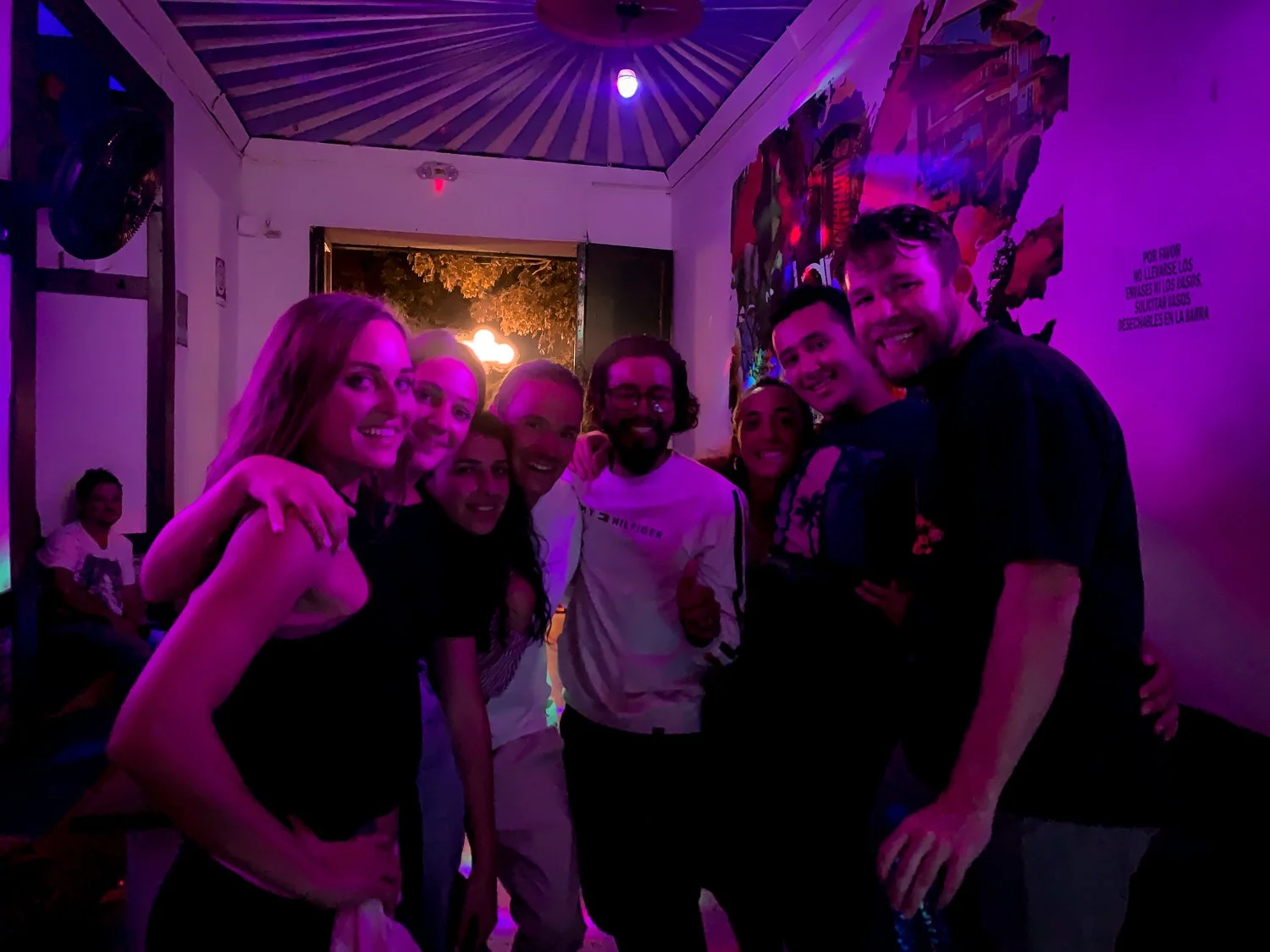

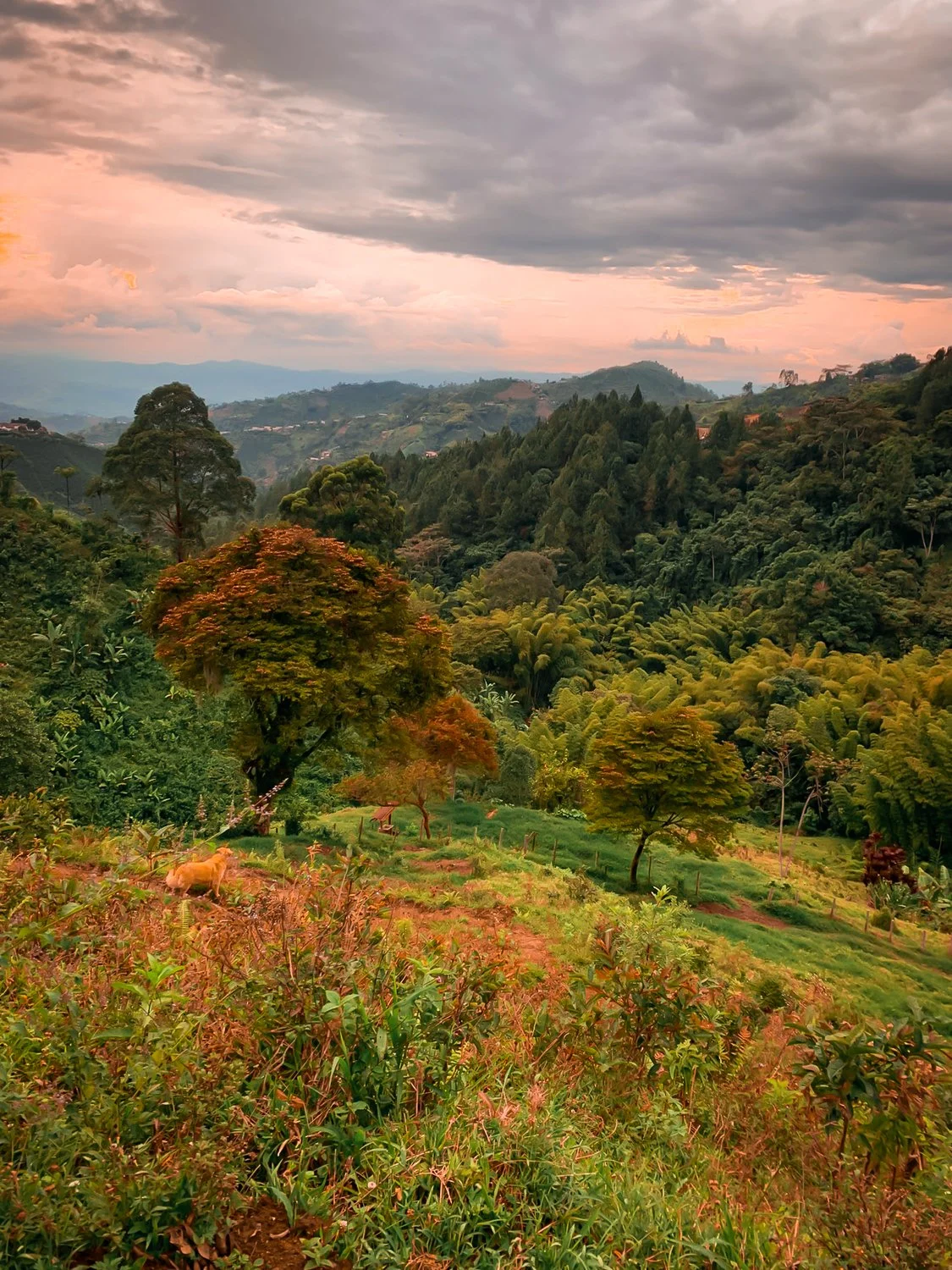



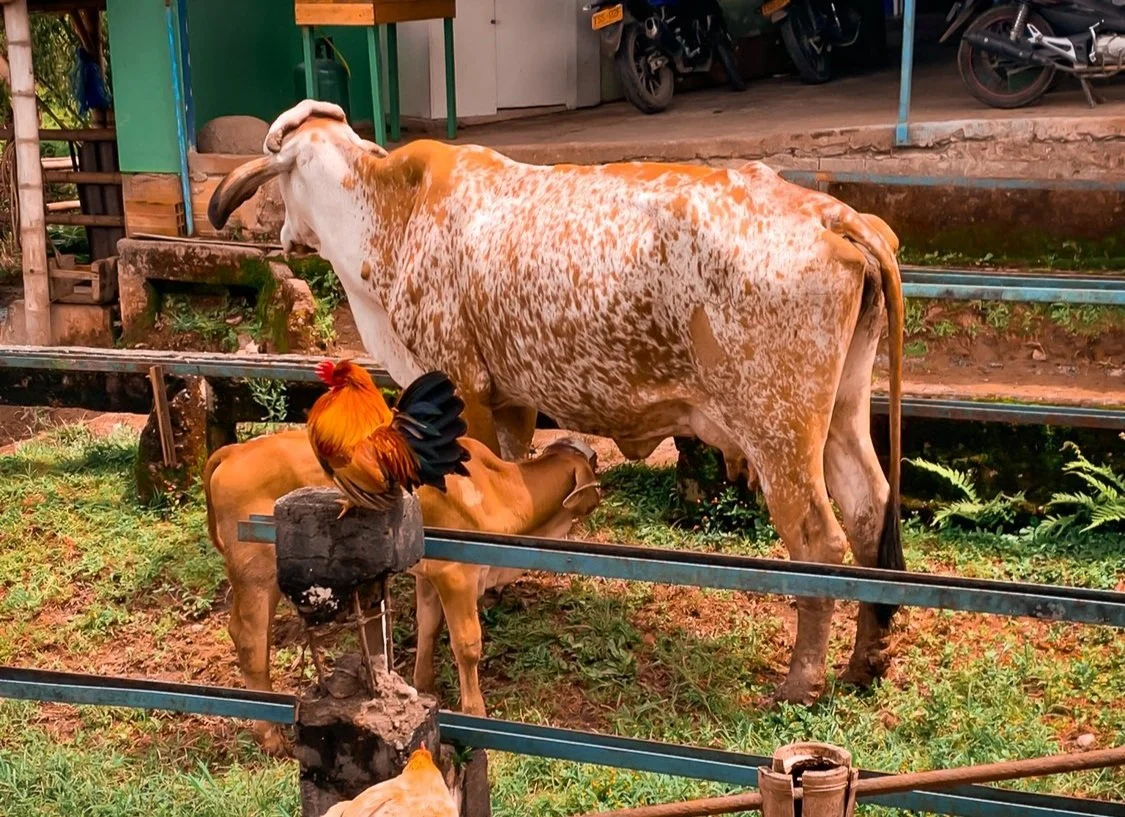
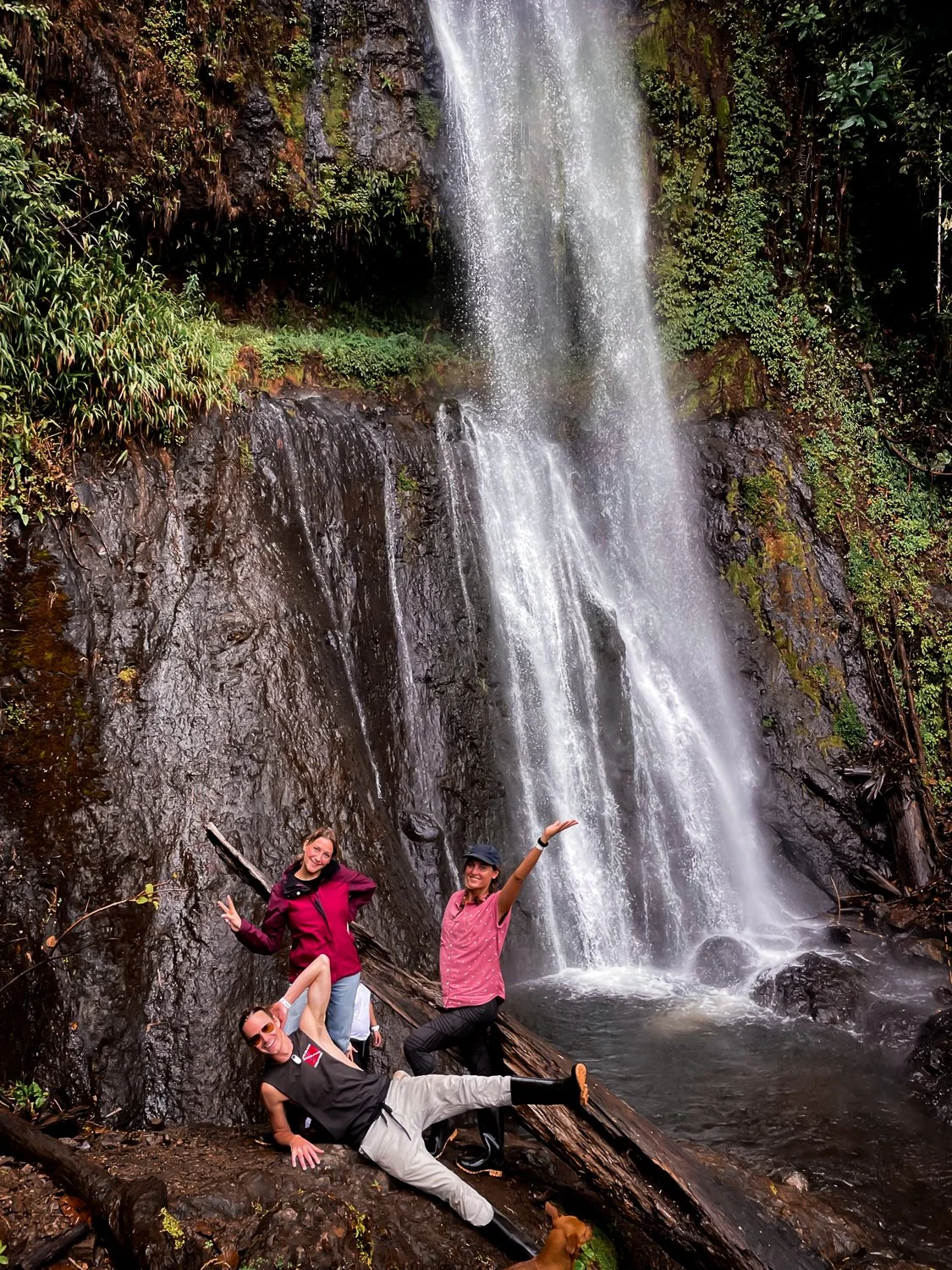

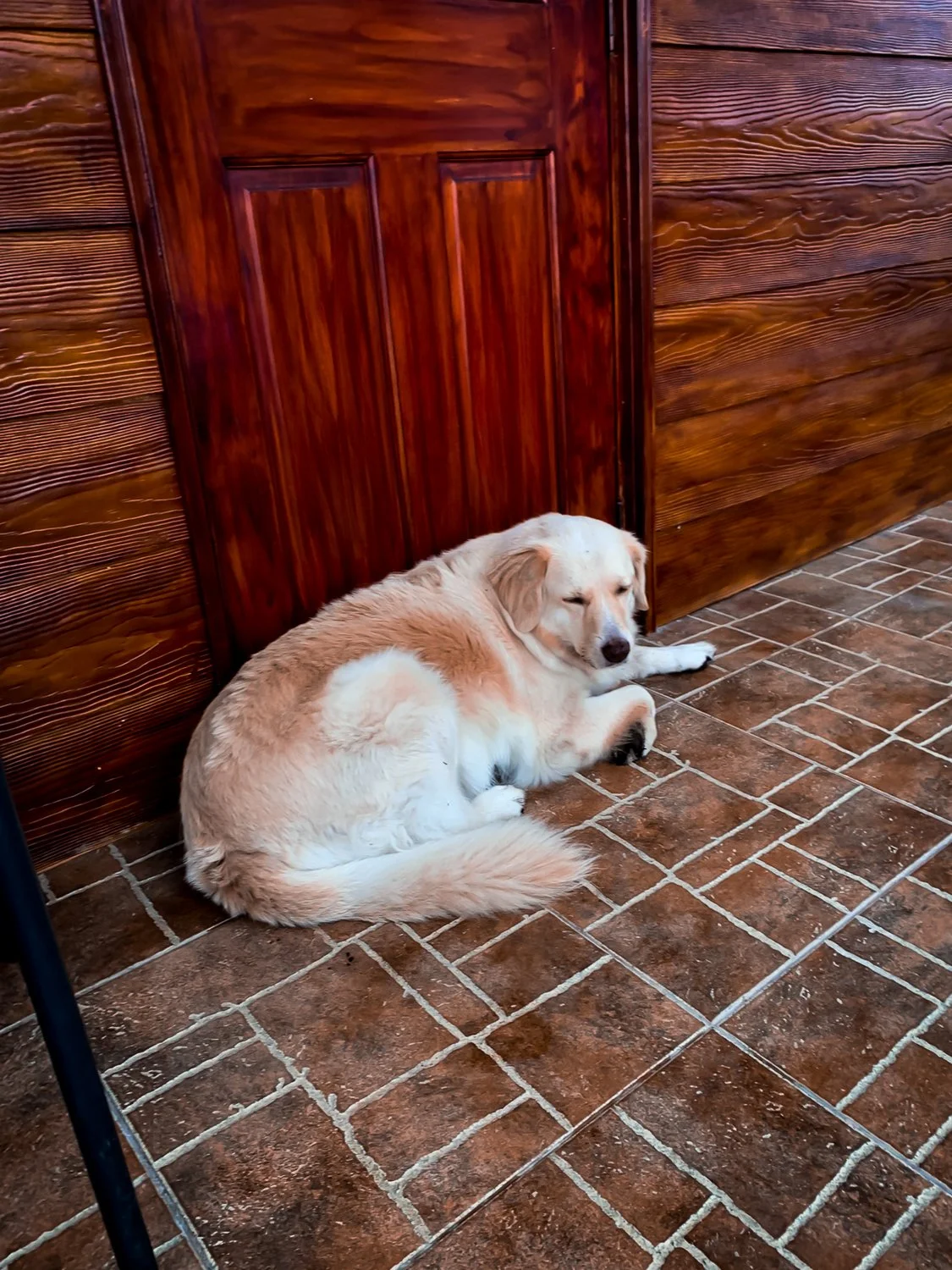
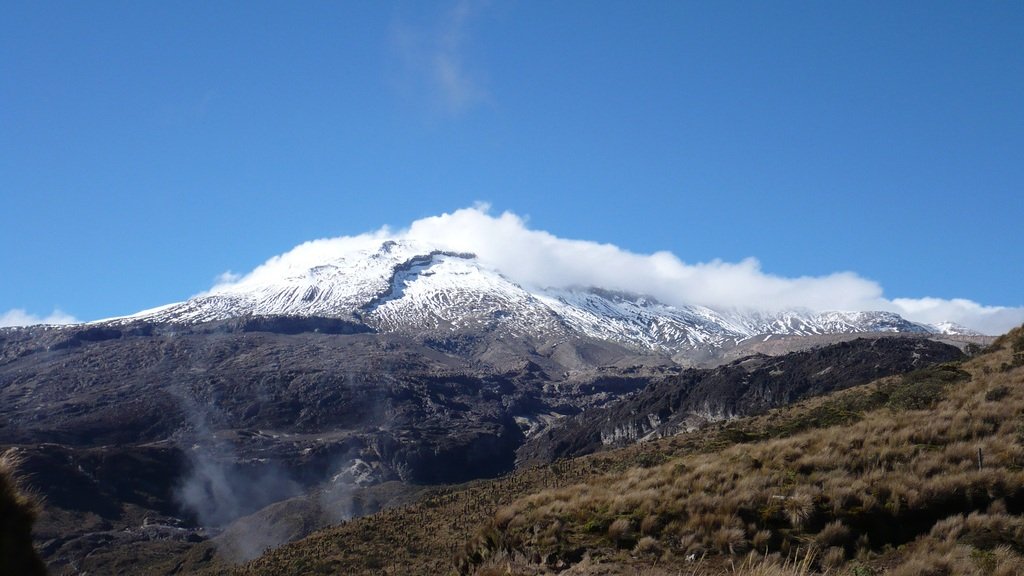
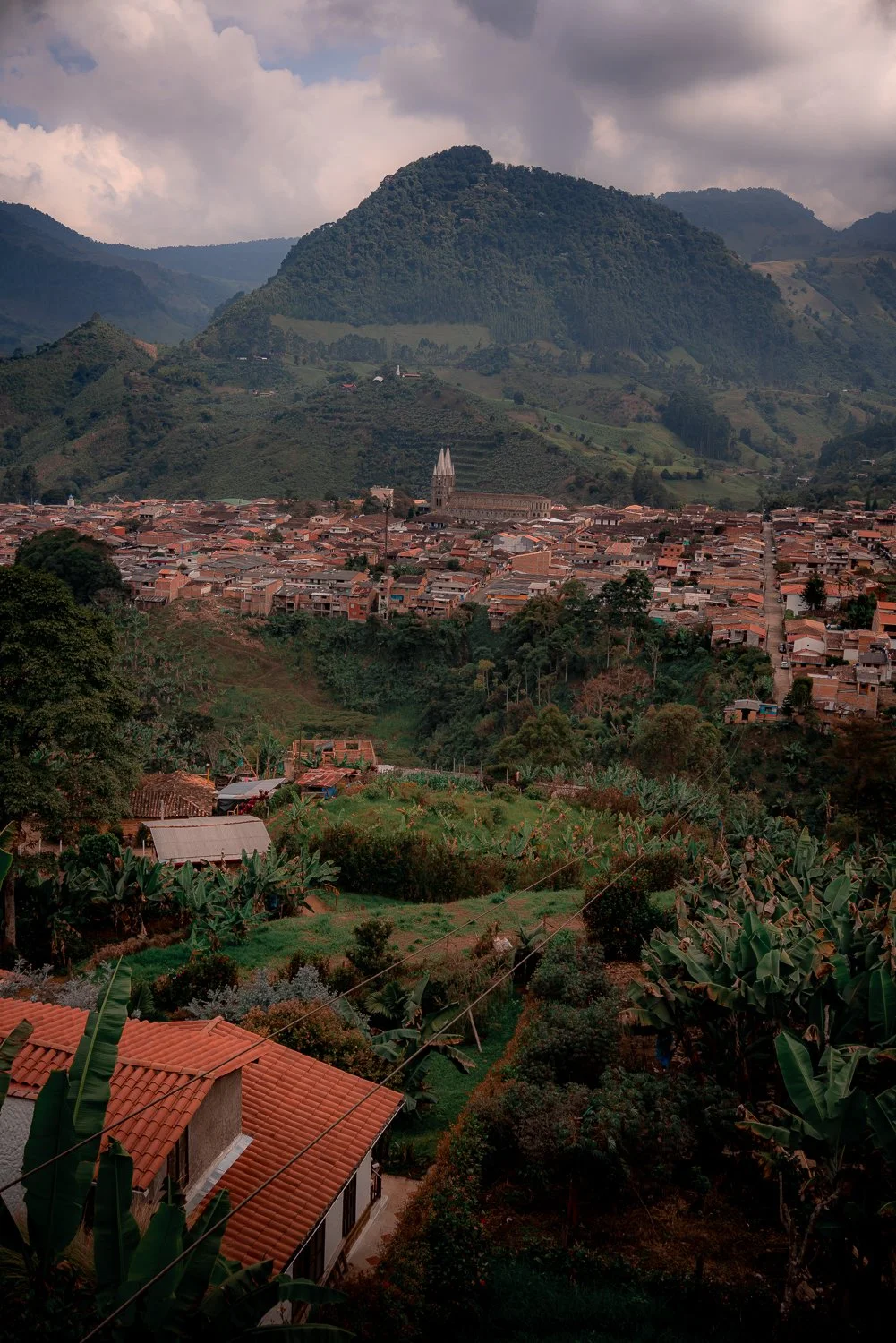


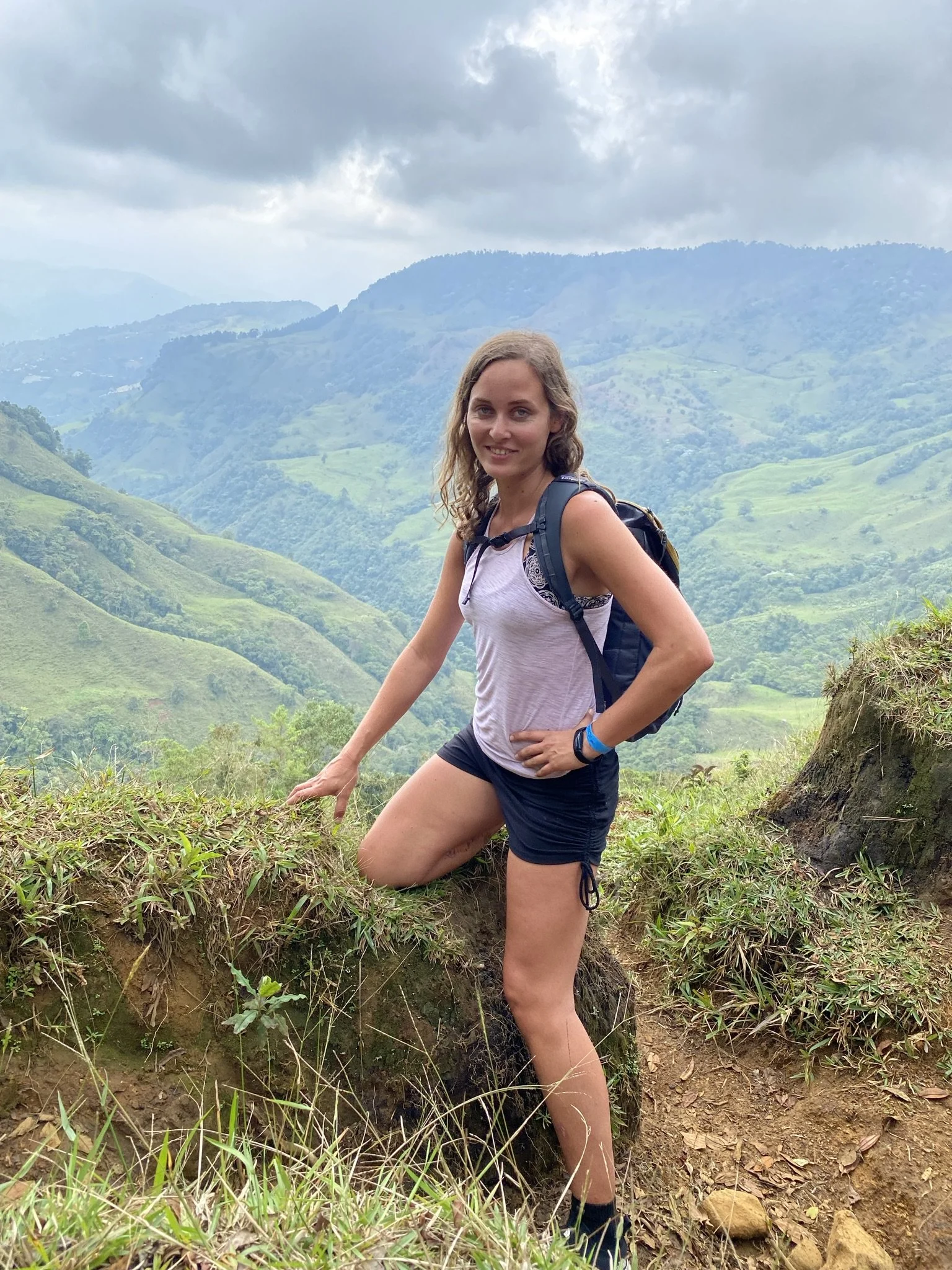

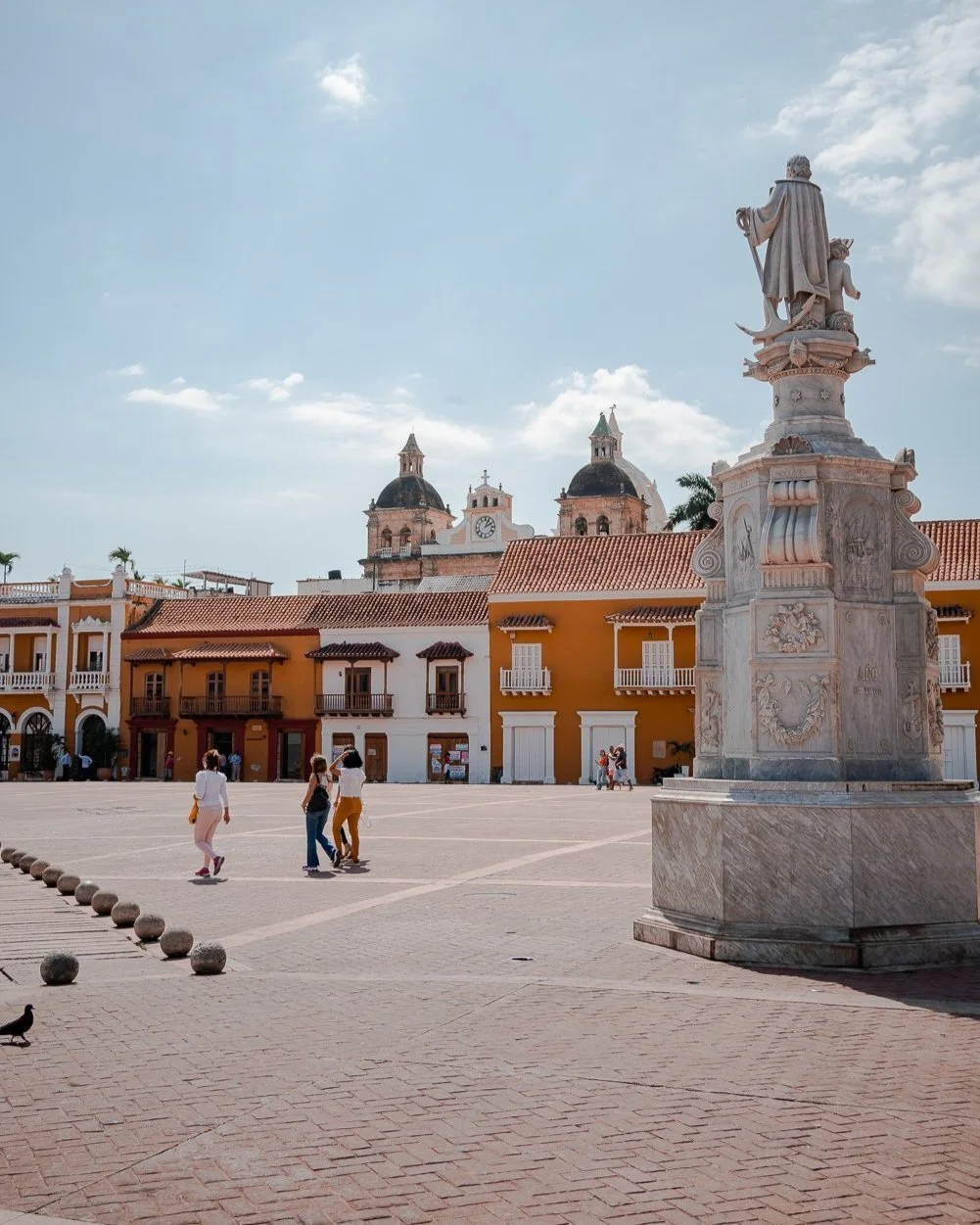


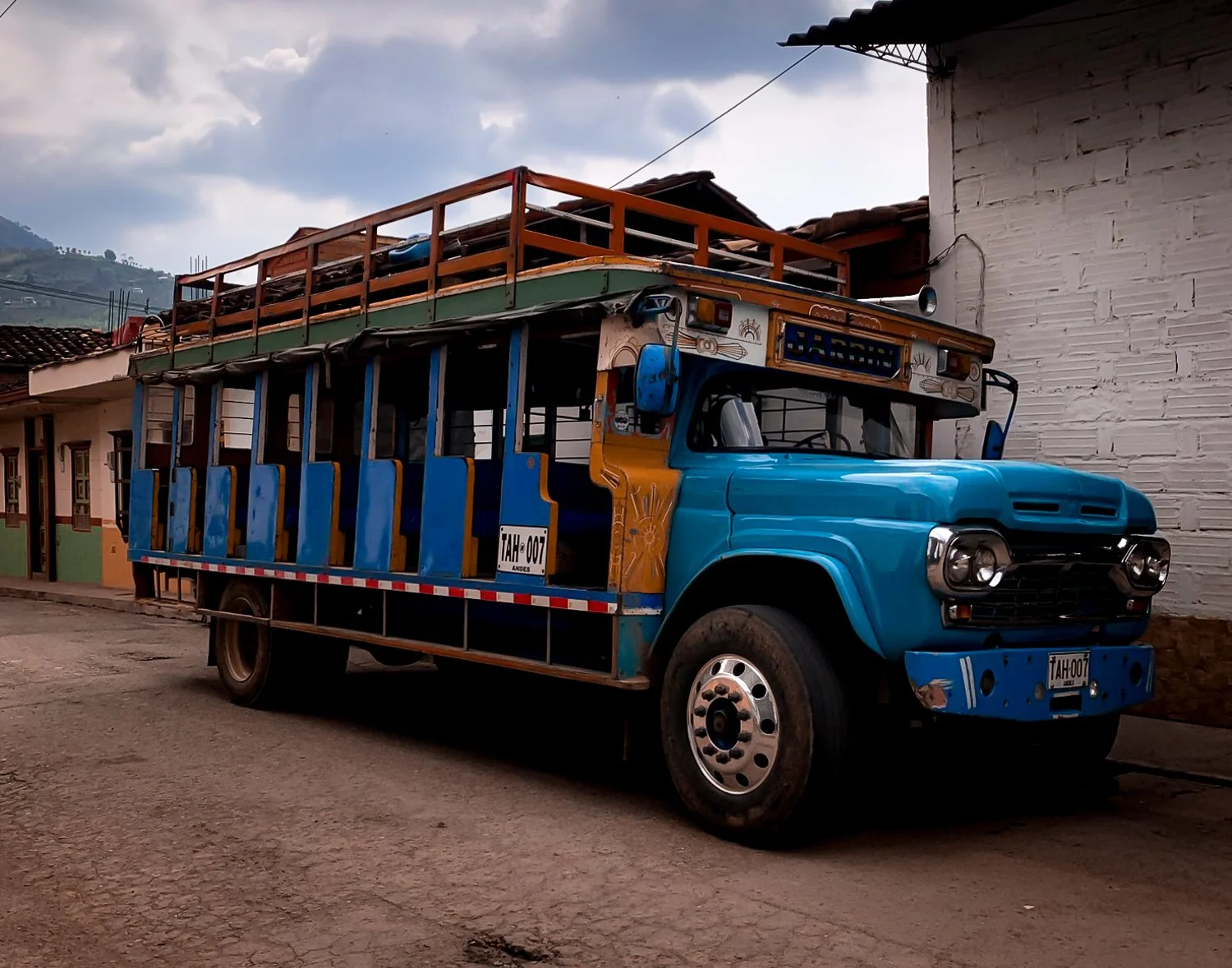
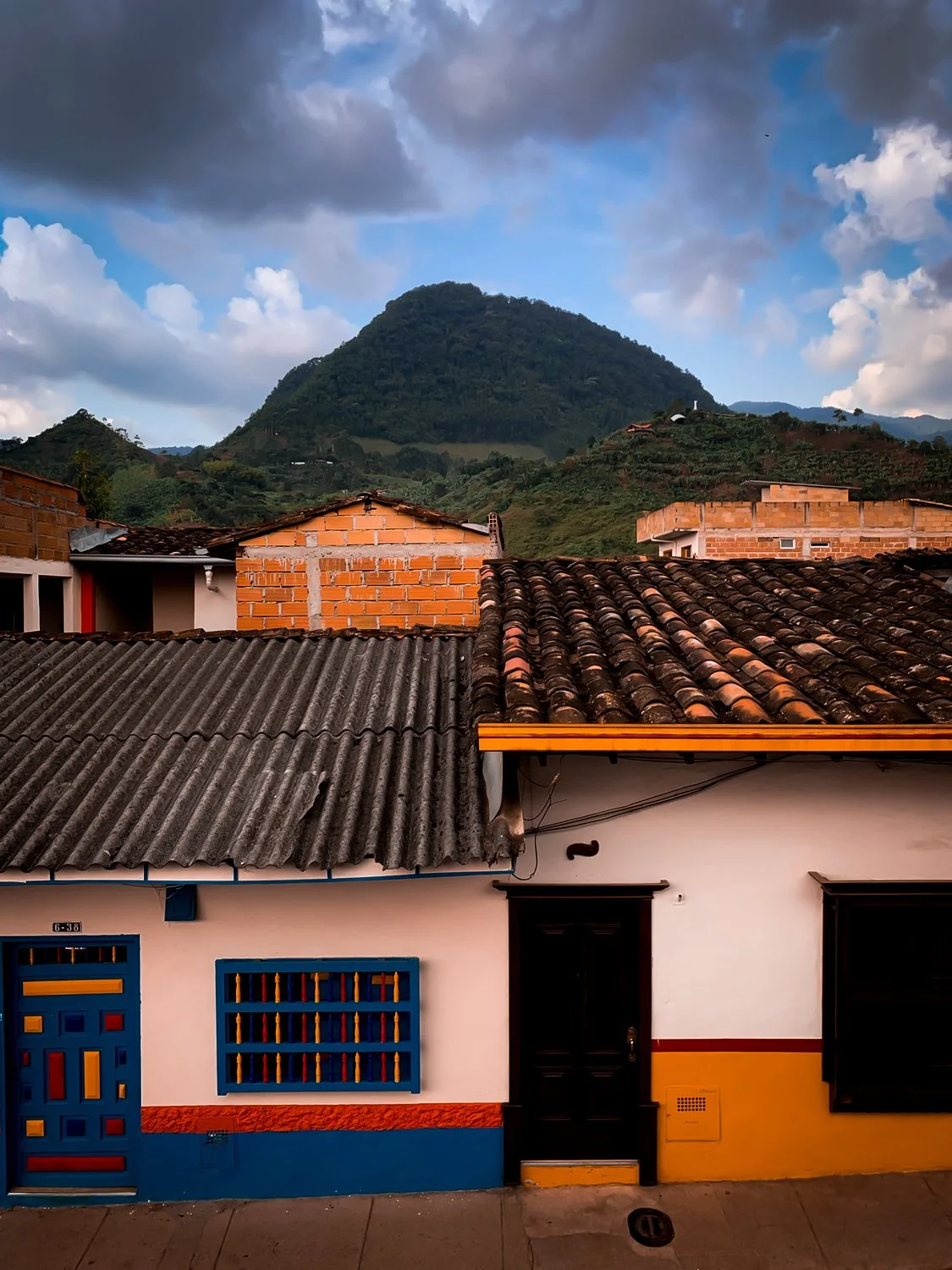


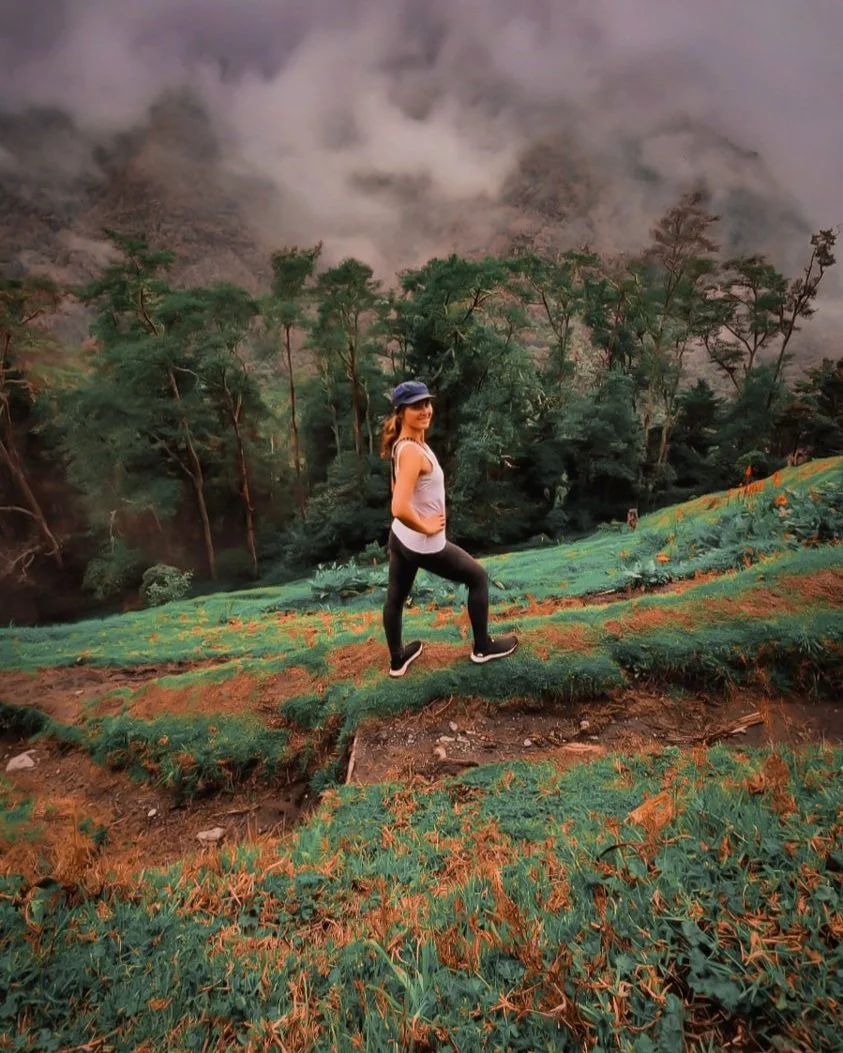
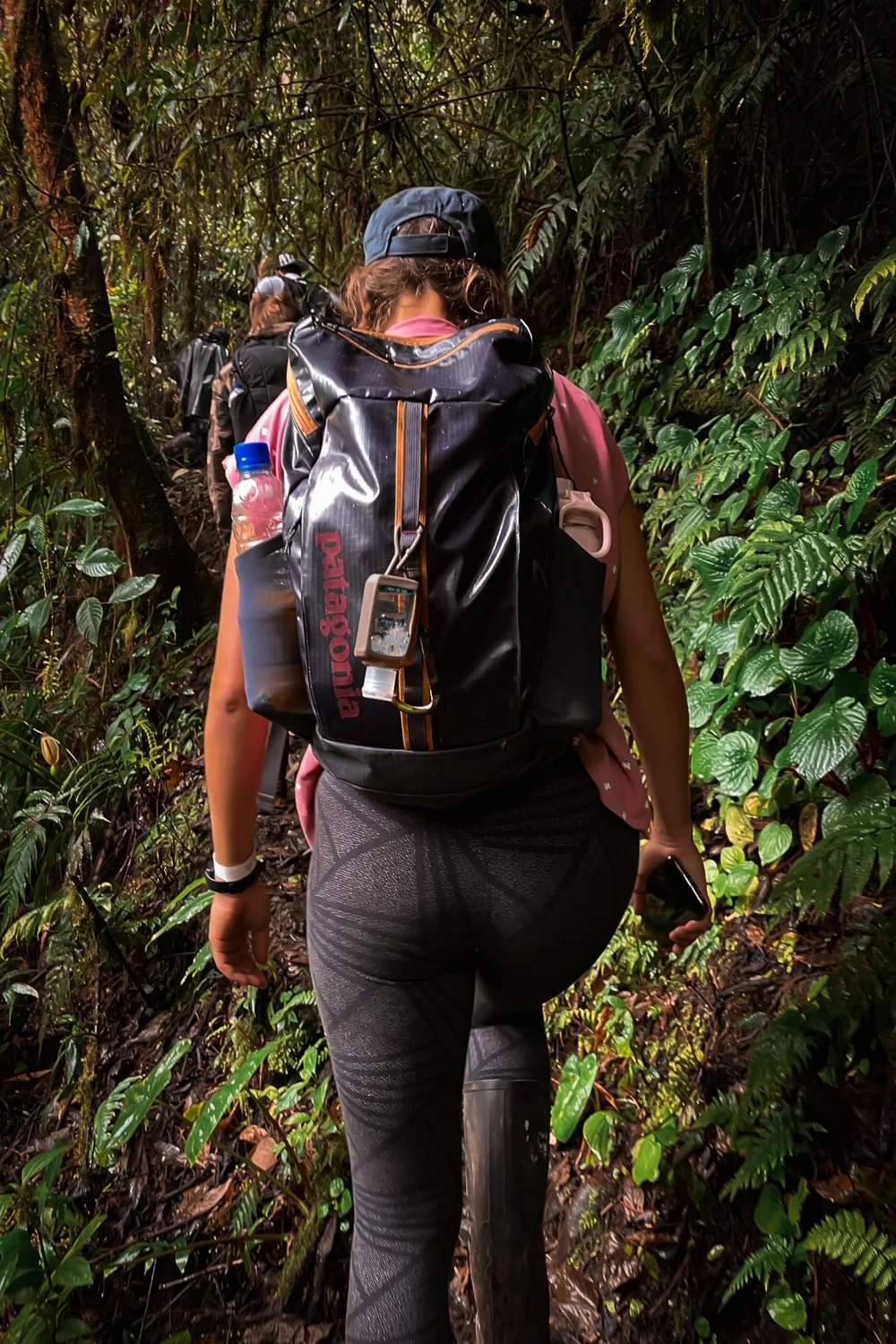



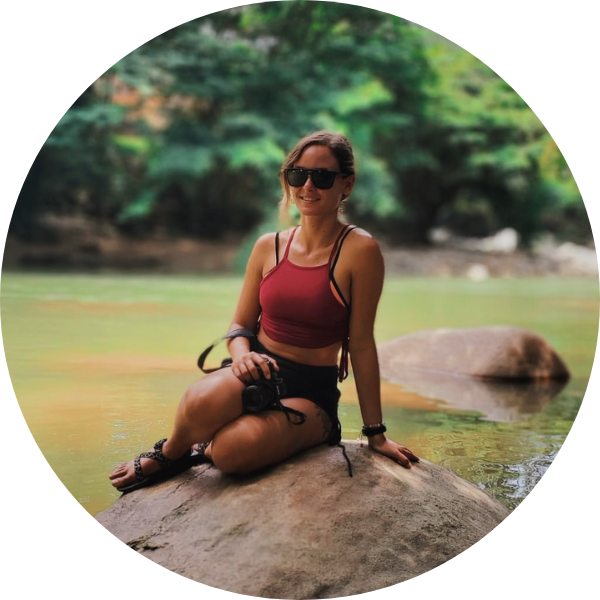











Guide to my favorite town in Colombia, the underrated “garden” of Antioquia.